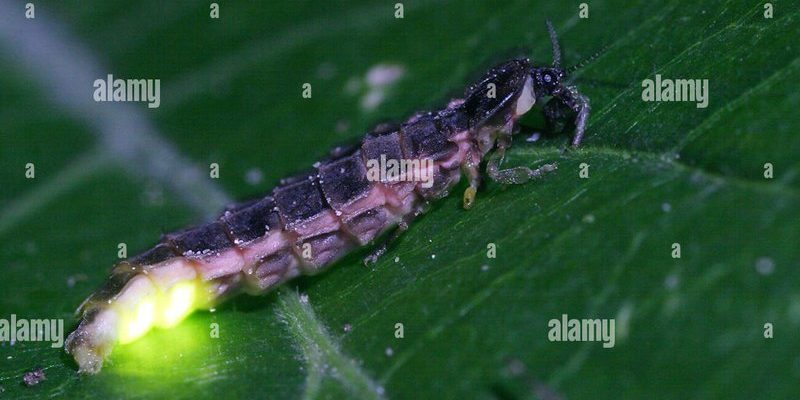
Using a field camera, like the popular Bushnell Trophy Cam, not only helps researchers but also nature enthusiasts who want to record and study these insects in their natural habitats. These cameras can capture hours of footage, revealing the hidden behaviors and interactions of glowworms that we might otherwise miss. So, whether you’re a budding entomologist or simply curious, let’s dive into how to effectively use field cameras to document glowworm behavior.
Why Documenting Glowworm Behavior Matters
Studying glowworms is more than just capturing pretty pictures. These insects, particularly the larvae, play a crucial role in the ecosystem. They can indicate the health of their environments, much like a canary in a coal mine. Their presence often suggests a rich, healthy habitat, and observing their behavior can provide valuable insights into environmental changes.
By documenting their actions, we can learn about their feeding patterns, mating rituals, and even how they interact with other organisms. For instance, have you ever noticed how they use their silk threads to trap prey? This fascinating behavior helps scientists understand their role in the food web. Plus, sharing this information can inspire others to appreciate and protect these glowing gems of nature.
Choosing the Right Field Camera
Now, the first step in capturing these mesmerizing insects is selecting the right field camera. You’ll want something that can handle low-light conditions since glowworms shine brightly against the darkness. A camera like the Browning Strike Force offers night vision capabilities and excellent resolution, making it perfect for documenting glowworm behavior.
When choosing a camera, consider factors like battery life, ease of setup, and the ability to capture high-quality video. Ideally, you want a model with a fast trigger speed to capture those fleeting moments when glowworms are most active, usually at night. Remember, the right camera can make all the difference in how successfully you document your findings.
Setting Up Your Field Camera
Once you’ve selected your camera, it’s time to set it up properly. Finding the right location is crucial. Look for areas where glowworms are known to thrive, such as damp caves, forests, or riverbanks. You might be wondering how to spot these places, and that’s where some preliminary research comes in handy. Check local forums or resources on glowworm habitats to discover tips and spots.
When positioning your camera, aim to set it at the same level as the glowworms. This perspective lets you capture their behaviors more effectively. Be mindful of the distance as well—too far away, and you might miss the details; too close, and you risk disturbing their natural behavior. Use a sturdy tripod or mount to keep the camera steady, along with a weatherproof casing if necessary.
Understanding Glowworm Behavior
Before you start recording, it’s essential to familiarize yourself with glowworm behavior. These insects have a unique life cycle that includes various stages, from egg to larva, pupa, and adult. The larval stage is when they emit light, usually to attract prey. This bioluminescence helps them catch small insects like moths, which they ensnare with silk threads.
You might notice that glowworms tend to be most active at specific times. Understanding these patterns can help with your documentation. For example, adult glowworms tend to emerge during warmer months and are usually more visible and active on warm, humid nights. Documenting these behaviors requires patience, but it’s incredibly rewarding as you gain insight into their intriguing lifecycle.
Reviewing Your Footage and Data
After spending time documenting glowworms, the next step is reviewing your footage. This can be one of the most exciting parts of the journey. As you watch the recordings, keep an eye out for interesting behaviors, such as feeding, mating, or interactions with other organisms. Taking notes during your review can help you identify patterns or significant events that you might want to investigate further.
If you notice something remarkable, consider sharing it with your local conservation group or community science project. Your observations could contribute to a broader understanding of glowworm populations and their habitats. Plus, it’s a great way to engage with other enthusiasts who share your love for these glowing insects.
Common Challenges and Troubleshooting Tips
Documenting glowworm behavior isn’t without its challenges. One common issue is inadequate light, which can lead to grainy footage or missed opportunities. If your camera isn’t capturing enough quality images, you might want to check the settings or consider repositioning it to a spot with better natural light or a different angle.
Other potential problems include battery life and storage issues. Always ensure your camera is set up with fresh batteries and adequate storage to prevent it from running out halfway through your observation period. Regularly check your camera and reset it if necessary to ensure it captures everything you want.
Sharing Your Findings
After gathering and analyzing your footage, the final step is sharing your findings with others. This could be through social media platforms, blogs, or local community groups interested in wildlife conservation. You’d be surprised how many people are eager to learn about the beauty of glowworms and how they contribute to the ecosystem.
Consider creating a short video montage of your best clips, narrating your experience, and the behaviors you observed. This way, you not only showcase the glowworms but also inspire others to appreciate and study these fascinating insects. It’s a rewarding way to connect with a community that values nature as much as you do.
In conclusion, documenting the behavior of glowworms using field cameras is both an enlightening experience and a way to contribute to our understanding of these wonderful insects. So grab your camera, find a glowworm hotspot, and let the adventure begin! There’s so much to learn, and who knows—you might just capture that perfect glowing moment!

